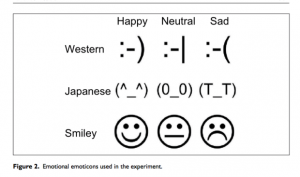Weekly Blog – Cultural
Blog 10:

(Link: https://images.app.goo.gl/RLWeQkhMY72vLJvv8) I chose this image because it represents how taking this course has helped me focus more into the light at the end of the tunnel. Often, I have had a difficult time staying motivated to do thing that have a pay-off way off in the distance. This course has helped me keep going.
At the beginning of this course, I wrote that I expected that what I gain from this course will help me in understanding my students better culturally. In reality, I believe this is true now that we are at the end of this course. Just in understanding that culture enacts itself through values, norms, and beliefs about ourselves and others, I have been able to see my students’ behaviors less as disobedient and more as a product of their culture. I feel as though I have been successful in achieving the course objectives. My attitude towards Cross-Cultural Psychology has changed in the way that I went into believing that it would be hard set in the ways that research has informed psychologists and what they deem to be true about the cultural world. However, through reading the textbook, I picked up that that research is in constant question and development in order to include all culturally psychological realities. If I took the class again, I would do some of my own research to test cultural and psychological possibilities in order to be more familiar with and think critically about research methods. I believe I have grown academically in the last few months because now that I have found the subject area that I am really interested in, I can be comfortable expressing my own opinion in the work that I do in the field that I love. One skill that I have learned but want to continue developing is this course’s focus on questioning and refining research methods in order to not be culturally biased. I believe this will help me professionally because being culturally biased in a public school setting will be harmful to our future generation.
Blog 9:

(Link: https://www.google.com/imgres?imgurl=https%3A%2F%2Fcache.desktopnexus.com%2Fthumbseg%2F2301%2F2301935-bigthumbnail.jpg&imgrefurl=https%3A%2F%2Fentertainment.desktopnexus.com%2Fwallpaper%2F2301935%2F&docid=wEtQCBBmXLDdlM&tbnid=26MSFOcAVpV5IM%3A&vet=1&w=450&h=253&source=sh%2Fx%2Fim)
The top three things that I think I have learned from this course this year are the dynamic of a gender-nonconforming individual from the US in a foreign country, a broad but accurate definition of enacted American culture, and that culture motivates and underlies so much of our thinking and behaving. In my first assignment takeaway post, I questioned the validity of the Intercultural Sensitivity Model. I believe in the very next assignment takeaway post, I recognize why it feels like an American cultural definition to be able to go in and out of multiple cultural contexts. One of the things that I learned in this course that relates to a philosophy course last semester was the level at which a culture is considered masculine or feminine. In that, more feminine cultures are less concerned with traditional religious values. In my philosophy course, I learned of Feminist Theories of Justice, which, also, were less focused on justice in terms of religious morality but more so on inter-relational aspects of justice. This was interesting to learn because most Feminist Theories of Justice come from an American background, even though the US is rated as being a more masculine culture.
Blog 8:

Similar to a lot of the information we’ve learned about in our textbook, Eastern, more collectivist, culture is one that I have come across that provides the most noticeable difference to my own experience. When I was backpacking in Spain, I befriended a group of people from South Korea. In this experience, I noticed that during our dinner conversations, their emotions were expressed more so through noticeable eye movements and behaviors. Additionally, while they were telling stories that were humorous, they would all include their own piece of information to add to the humor and then all laugh together, whereas, American or Western stories are more like a monologue. Their behaviors were different than what I had expected because I had never spent so much time with a group of people that were coming form a collectivist culture. The display rule definitely explains my experience with this group of people because in their story telling or dinner conversations, they would express themselves differently than when I would talk with them individually on the trail.
Blog 7:

I think fairy tales can both be a result of cultural values and norms, usually surrounding gender, but I also think that they can inform a cultural of their values and norms even among the fairy tales not representing reality. For example, the common fairy tale story is about how a woman (or rather, girl) falls in love with a man and is then seen as valuable and purposeful. I think that for years, this has taught girls and women that this is their purpose despite changing realities that there are higher college graduation rates for women now. However, I also think that this story represents the cultural norm for women. I believe that as we push for egalitarian roles in fairy tales and movies, more and more children and adults alike will be given substantial freedom as the norm to determine their own interests and desires. Many of the characters in fictional stories and books by Wendell Berry have greatly influenced and caused me to form my life to be more like theirs, specifically, the book, Hannah Coulter.
Blog 6:

(Link: https://goo.gl/images/nbipZ5) I chose this image because I am a psychology student and my wife is a sociology student so I feel that my autonomy comes from seeing through both of these lenses.
As I said in the caption of the image above, my wife studies sociology as a graduate student at UVA and I study psychology here. This unique circumstance meets my needs in feeling autonomous by being able to offer a new perspective to her, as sociology and psychology are often seen as disagreeing fields, but also because I feel, through my surface level understanding of sociology, that I am able to bring a new understanding of the social world into psychology in ways that other people haven’t considered. My need for competency is met through successfully holding the tension between the two fields together and then work from there. Because this understanding feels unique in my case, I think sharing about it through blogs and papers feels like my need is met for relatedness among professors and fellow students.
Blog 4:

At the beginning of the year, I decided to go ahead and purchase the required textbook. I did this because I both want to keep the book to refer back to whenever I may need it in the future because it has already been very useful to me and I have been highlighting with different colored markers the part of the material that I find important. After I finished highlighting, I would then type the summary of what I highlighted in my own words. I did space out my studying throughout the week before the exam but I don’t think that I repeated the process a sufficient number of times in order to be as familiar with the material as I would have liked. I think the feedback of my scores and reviewing my previous study habits will benefit me in that I ought to pay closer attention to the researchers’ names that are correlated to the cross-cultural studies provided in the textbook and that reviewing the study guide multiple times will make the material more familiar.
Blog 3:

I chose this image because I feel that these are the most applicable words to describe my personality.
In Openness, I scored 33. In Conscientiousness, I scored 22. In Extraversion, I scored 31. In Agreeableness, I scored the highest with a 42. And, lastly, I scored 24 in Neuroticism. Surprisingly, I believe these scores are accurately representative of my personality. Scoring the highest in the Agreeableness category made a lot of sense to me because a driving force in my life is often concerned with leaving space for others to speak, finding common ground in moments of conflict, and being generally open to whatever other people might be interested in doing. The only score I don’t entirely agree with is my lowest score of 22 in the category Conscientiousness. I believe I work hard and care deeply about doing a good job, especially at my current job. However, only in my past do I often refer to as being less driven and not very motivated. I believe my Openness score is accurate because it falls fairly moderately which I think is true because there are days when I’m looking for change and adventure and others when I need familiarity and routine. My Extraversion score also seems accurate based on its moderation because I often find it difficult to determine whether or not I am introverted or extraverted based on the energy I receive from being around others and the necessity I feel to be alone in my thoughts. And though, I sometimes get into moods of being angry or irritable, I am usually calm and easygoing, thus, determining an accurate score on Neuroticism.
Blog 2:

This image is of me (right) and my two coworkers, people who have aided me in my pursuit of my career and shown me the benefit in receiving a higher education.
One fundamental value that underlies most of my life is caring. Whether it is expressed through my appreciation for my family, the love I have for my wife, the community of friends that surround me, or my desire to meet the needs of my students, I have always been cared for and taught to care well for others. This value has certainly made it apparent to me as to why I chose to work in special education. I believe being enrolled in higher education courses is a result of that same care expressed to me which has created a secure foundation from which I can confidently take risks and challenge myself. I wanted to continue on into higher education so that I can find my own personal way of sharing that care with others who might not receive it from their families. My parents saw from an early age that I enjoyed working with children and that children enjoyed spending time with me. From that recognition, they began mentioning more intensive studies into education or psychology through college level courses.
Blog 1:

Link: https://goo.gl/images/MqkHng (This image, in a broad stroke, captures the essence of what can possibly be overwhelming about looking at all of culture and how it affects the world of psychology.)
The objectives of this course hold a lot of personal and professional value. Working in a middle school, although in a specific geographical location, there are often a multitude of differing cultural backgrounds. My job is to build relationships with students by the practice of meeting their needs, thus, culture plays a major influence in how I accomplish this task. I often run into a state of unpreparedness when a student’s needs are based upon their cultural context that I am unfamiliar with, so, I hope that this course will provide me with the proper tools to manage those situations appropriately and effectively. I believe that working full time in an educational environment will allow me many opportunities to put the knowledge I receive in this course to the test and then resulting in my fluency of cross-cultural research and practices.